Expand Your Melodic Vocabulary and Attain Superior Fretboard Awareness With 'Parallel Pentatonic Modal Vision'
Learn PPMV – an insightful mapping of the pentatonic scale’s multifaceted natural order
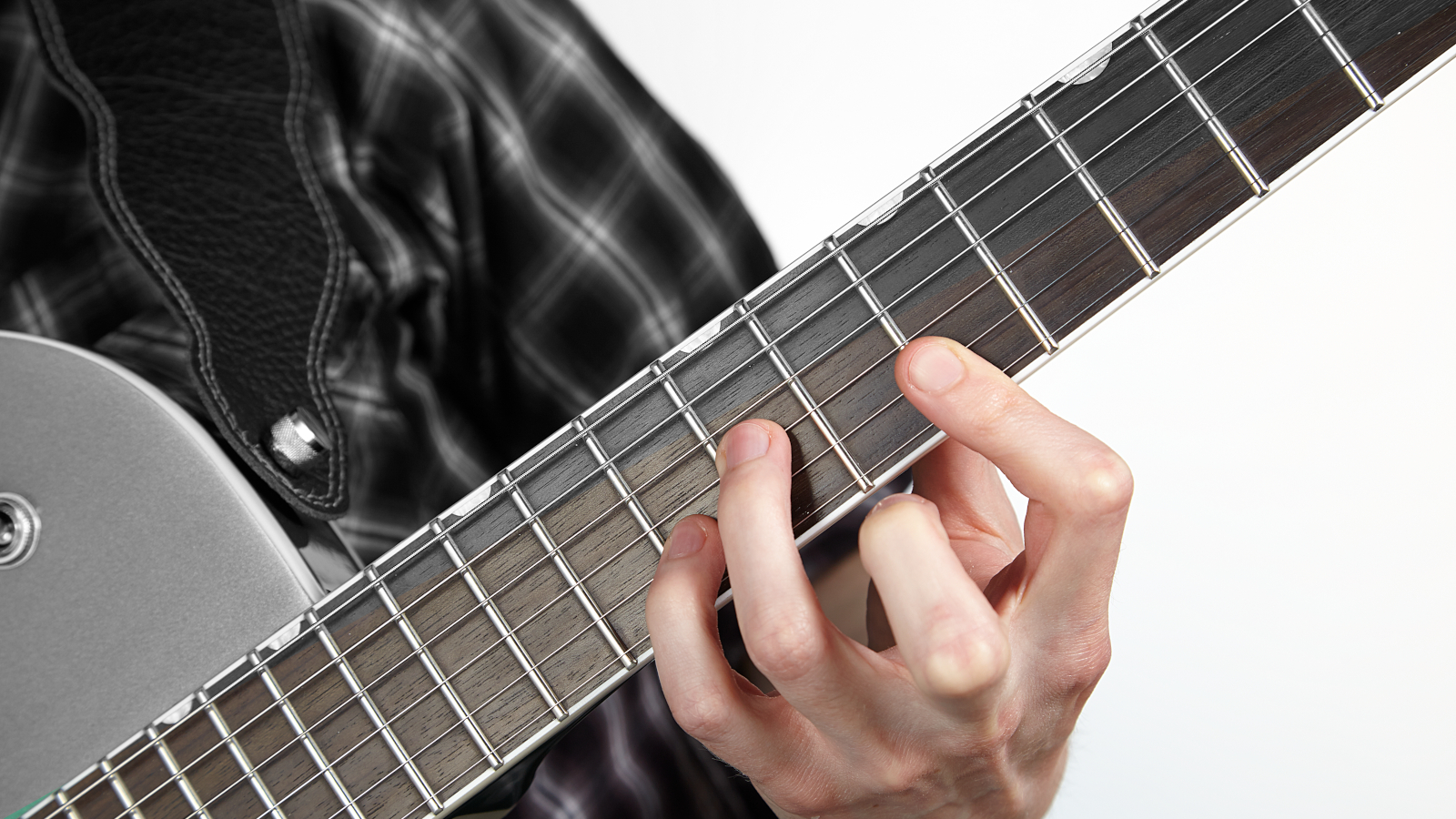
The guitar universe is vast, comprising seemingly infinite musical and learning possibilities. We guitarists, however, are connected by common threads, chiefly the pursuit of a unique voice and a burning desire to attain superior fretboard awareness.
At the heart of both endeavors, we’re all tightly tied to that five-note stalwart, the pentatonic scale.
In this lesson, I’m going to present alternative ways of viewing and working with this five-note entity that will open up fresh avenues for musical exploration and bolster your fretboard vision and awareness of the scale and its related chord voicings.
It’s all neatly packaged within something I call Parallel Pentatonic Modal Vision (PPMV).
When it comes to the pentatonic scale, the term modal is somewhat vexing. While it’s customary to consider modes when studying and referencing the major, melodic minor and harmonic minor scales, pentatonic is not ordinarily broken out into a modal family.
Rather, there are two specific aspects of it that most improvising guitarists relate to, which are the widely used major and minor pentatonic scales, the latter being the face of the franchise.
And while there are countless examples supporting the successful musical application of this dual approach across a broad range of popular guitar styles, the “two-party” paradigm limits the scale’s full potential, leaving untapped facets of this musical diamond.
All the latest guitar news, interviews, lessons, reviews, deals and more, direct to your inbox!
Let’s change that by laying out the puzzle pieces of PPMV and the methodology behind putting them together.
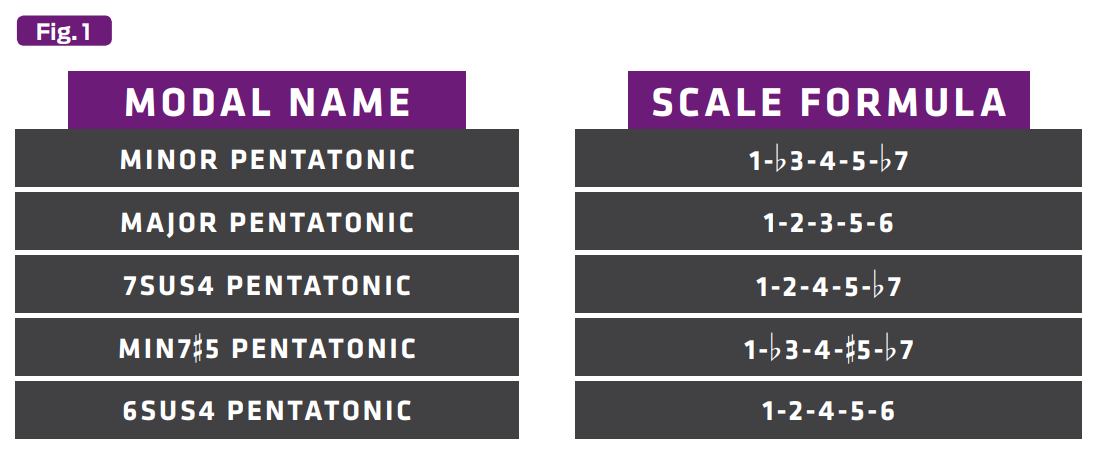
The first step is to place all the pieces on the table, as shown above in Fig. 1. These are the modal names and their respective interval formulas that make up the pentatonic scale’s five-mode set.
While the first two will undoubtedly be familiar to most players, the other three may not. Don’t fret, as the complete set of two-notes-per-string fingerings we’ll be working with is likely composed of shapes you already know how to play or will get under your fingers quickly.
As for the names, they’re based on their descriptive face-value application.
Applying that approach to the first two modes, they would be referred to more specifically as “min7 pentatonic” and “maj6 pentatonic.”
As you can see, I opted to go with the presumed application-oriented names, so as not to cause any tectonic shifts. At the end of the day, the names are meant to imply each scale’s function in a concisely descriptive manner.
Fully understanding your melodic choices when improvising is invaluable, and connecting the theory behind those choices to the neck is the golden ticket.
Before exploring the fingerings, it’s important to note that they should not be looked at as the sole representation of any parent scale or mode. The fact is, every scale system is an interconnecting network and grid of fingerings and shapes that come together to facilitate the playing of sounds across the neck.
The formula that makes up a parent scale or mode is what creates its sound, with one caveat: You need to commit to identifying the inner workings of the scale you’re playing and learning how to really play it.
The main objective of this system is to become aware of these five pentatonic-based sounds and turn them into tools to expand your melodic vocabulary and vision.
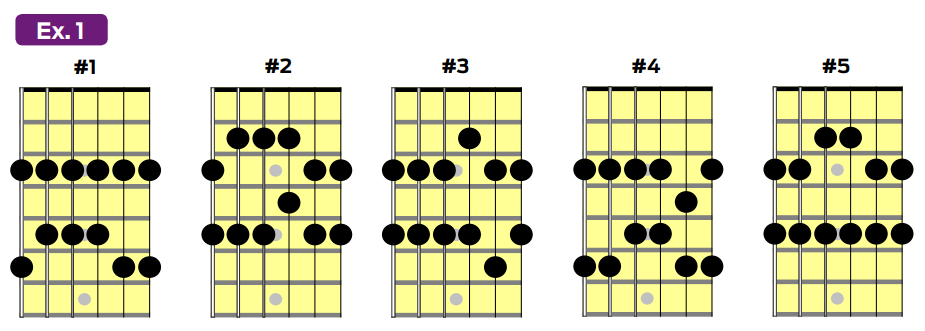
Ex. 1 illustrates the five fingering shapes we’ll be working with throughout PPMV.
Notice how they’re labeled with a straightforward naming convention based on numbers. The go-to minor pentatonic fingering is aptly named #1, and the remaining four shapes are #2, #3, #4 and #5, respectively.
The goal is to think of each fingering as a blank canvas separate from any predisposed identification, and the identity of each scale is dependent upon the player, as is the responsibility to bring about its modal function.
The results of the latter rest on how well you phrase your ideas, and a big part of that rests on your awareness of root notes and applicable chord tones.
To help facilitate this idea, the PPMV system is organized into five “zones” throughout the neck. The zones are vertical areas where each scale shares a common, parallel root or starting note.
This allows you to immediately hear each mode’s individual musical character, which is a vital attribute that’s often lost when learning modal systems from a relative perspective.
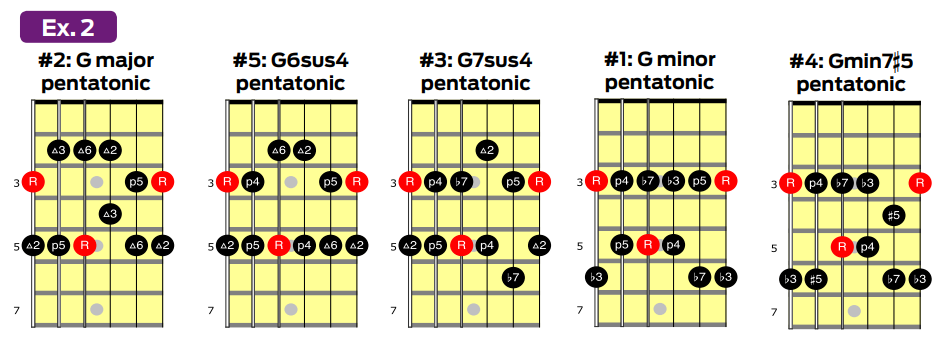
All five fingerings reside within each zone. Ex. 2 illustrates Zone 1 while Ex. 3 puts it into motion, via legato-phrased 16th-note lines.
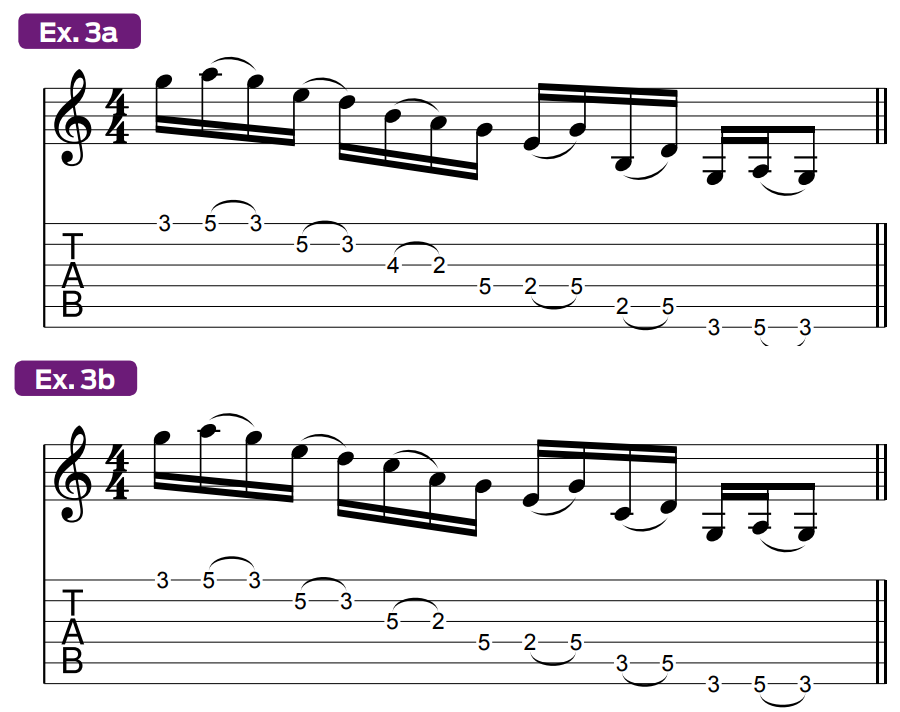
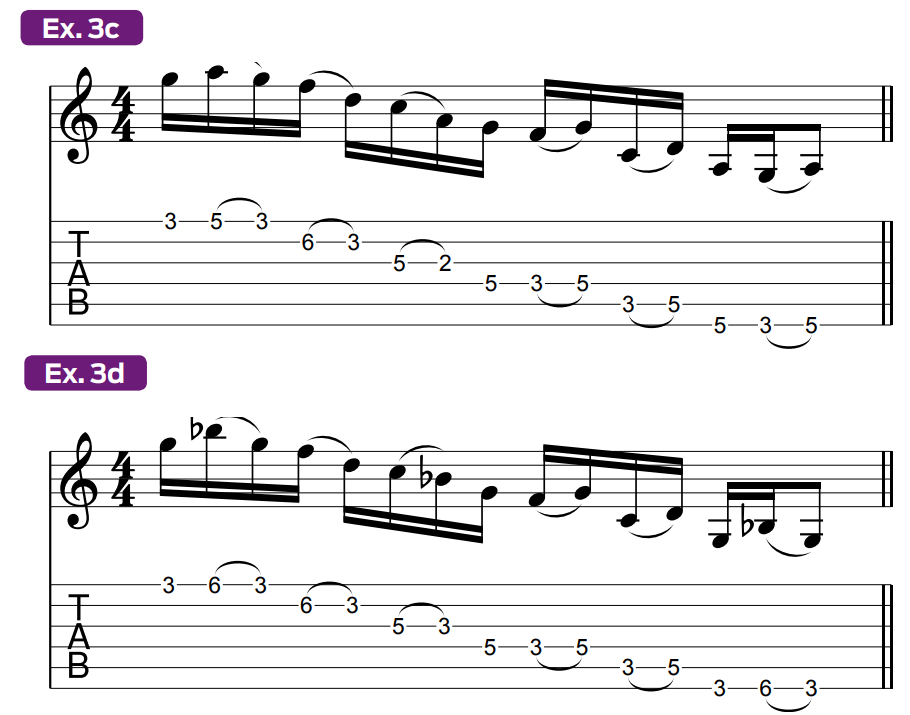

Notice how the recurring melodic patterns ricochet off the three available root notes throughout.
Root awareness is an important first step in effectively playing the intended sounds of the five pentatonic modes.
Also take note of how these patterns start from the first string and descend. First impressions are everything and usually prove to be the most memorable.
The majority of your playing time with these essential melodic devices will no doubt be on the higher, treble strings. So why not start there when learning something new?
When attempting to develop a strong awareness of modes and their network of fingerings throughout the fretboard, you’ll eventually run into an inherent challenge. The nature of scales being based on constant motion, it’s difficult to create and commit a mental picture, which makes it harder to build neck vision.
A workaround for this disconnect is to foster connections between melody and harmony through chords that correspond to the scale system you’re working with.
Since chords are static entities, it’s easier for your brain to take a snapshot and provide a more effective platform to form a dependable neck vision.
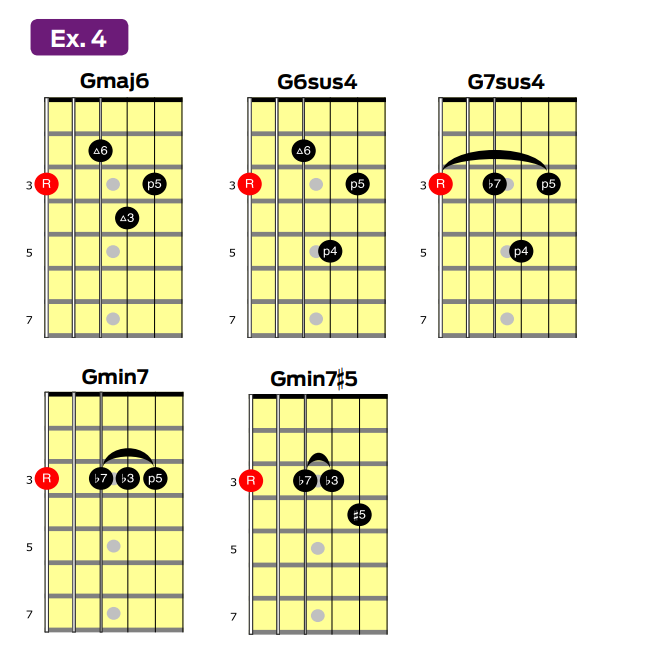
Ex. 4 illustrates five four-note chords that directly connect to the five parallel modes in Zone 1.
A close look will reveal that each chord tone can be found in its matching pentatonic mode. Notice how the chord names reflect the pentatonic modal names.
This face-value application helps reinforce the neck vision we’re trying to build.
Examples 5a–e take these five chord forms and use them as launch pads for lick ideas within their partnered modes.
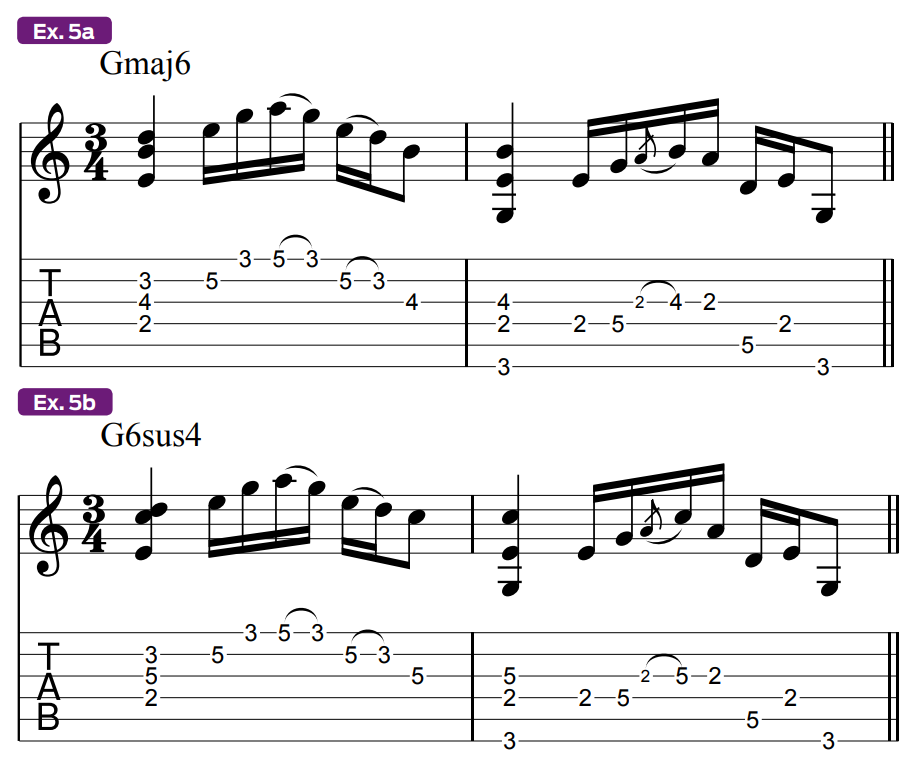
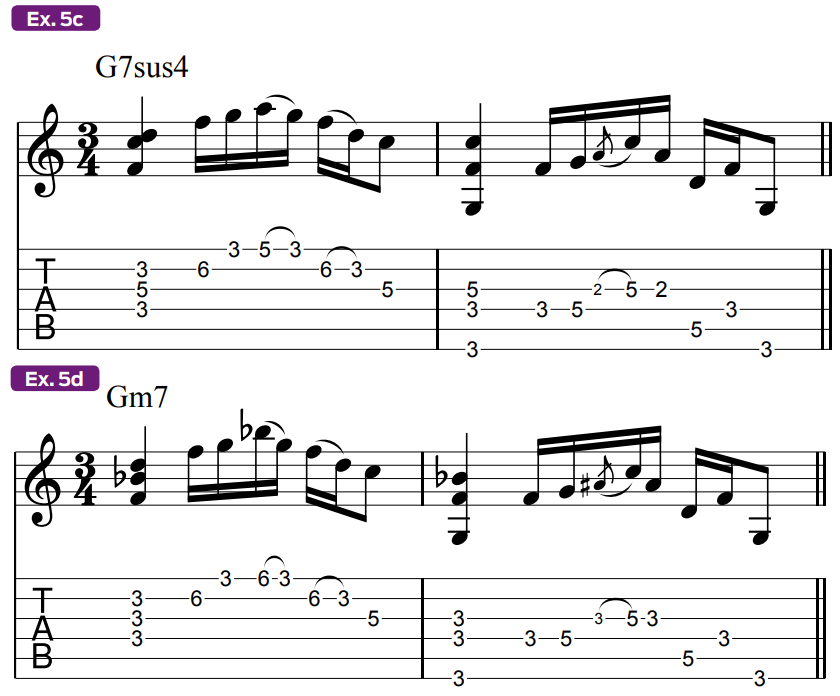

While playing through the lines, take notice of their musicality. Put more simply, check out how these examples do not sound like exercises.
This approach will put you on a more engaging path to a strong musical vision, one that’s focused on harmonic applications.
All this activity is working your musical ear and playing toward a well-rounded, unique headspace.
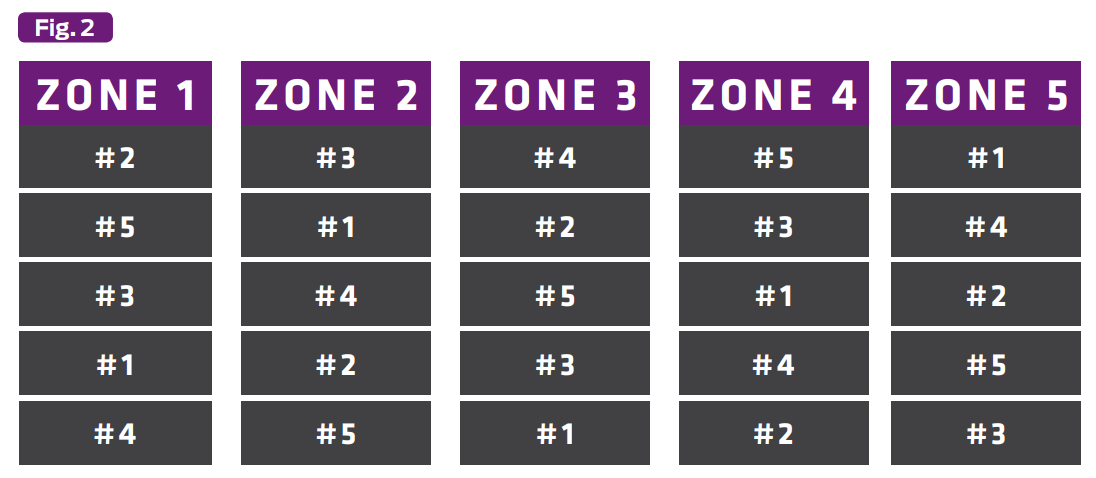
Now that you have some time logged in on Zone 1, it’s time to explore the rest of the PPMV system, as shown in Fig. 2.
As you delve into how this works, keep in mind that the fingerings stay the same as you ascend the neck.
The secret in the sauce is the how the parallel G root note is constantly redistributed. This is how the established order of pentatonic modal sounds – major, 6sus4, 7sus4, minor and min7#5 – is maintained.
Looking at the chart in Fig. 2, you can see how the zones progress up the neck like a circular conveyor belt, incrementally shifting through a fixed order of fingerings that will eventually come around again one octave above.
If you’re trying to envision how to successfully navigate through the same five fingerings creeping up the neck, look back to the connection between the pentatonic modes and their associated chords.
To make it work, the voicings of the chords change with every zone.
Examples 6a-e demonstrate this by applying relative ideas from Ex. 5 to Zone 2 while introducing signature voicings.


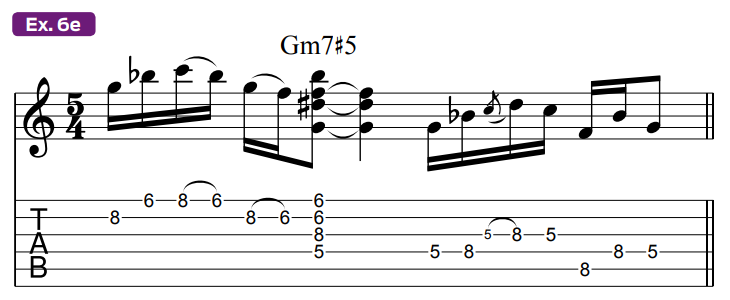
In Examples 7a-e, Zone 3 offers up a further departure from Ex. 5, as the next set of voicings are introduced.
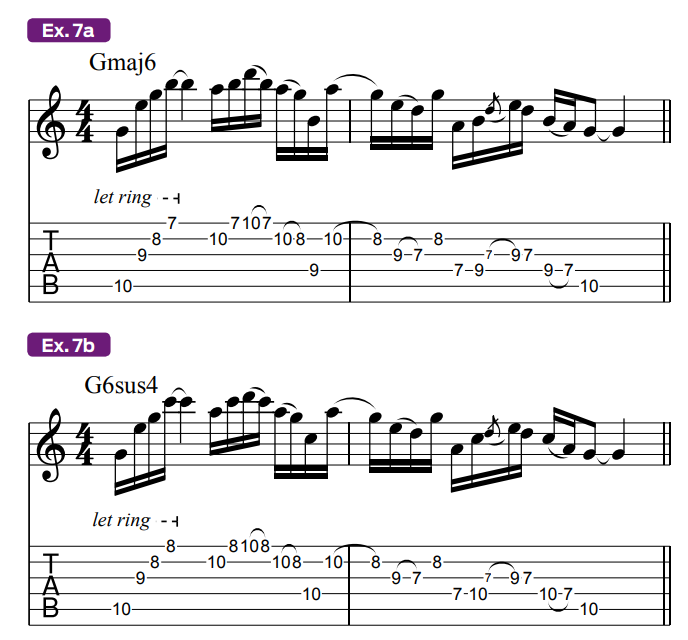
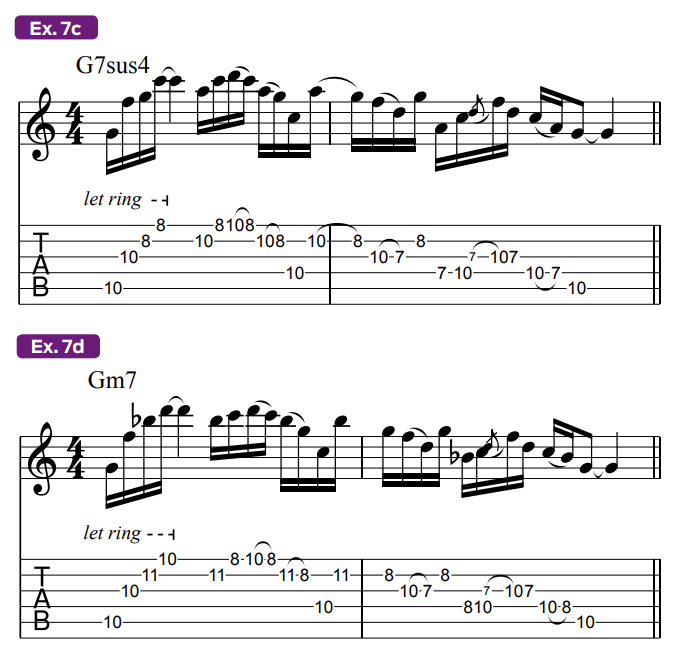
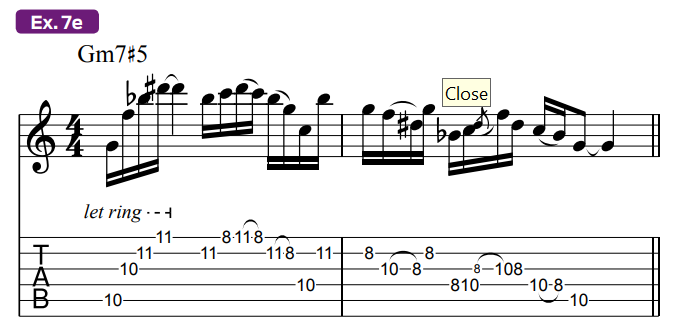
The recurring theme throughout these three sets is designed to show off the power of the vision as you reinforce tight melodic voice leading and deal with the associated technical challenges.
In all instances, it’s each zone’s set of exclusive chords that tattoo the identity of the pentatonic modes throughout the parallel vision.
At the end of the day, the chords are what pilot PPMV.
Examples 8a-e turn a corner with new lick ideas within Zone 4…
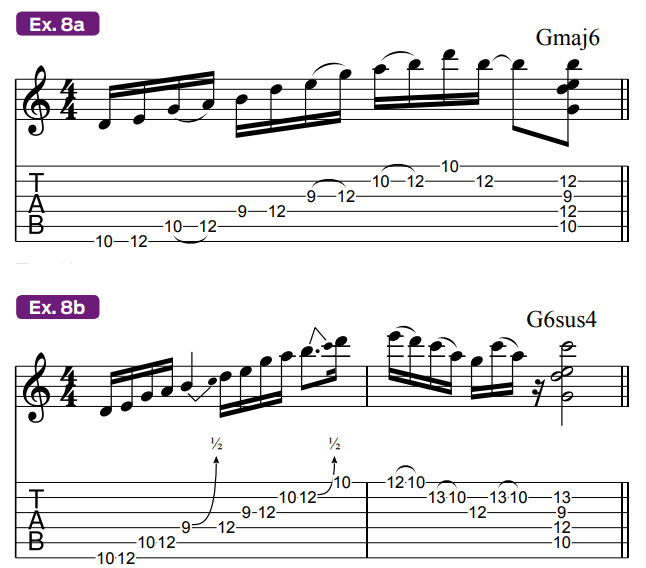
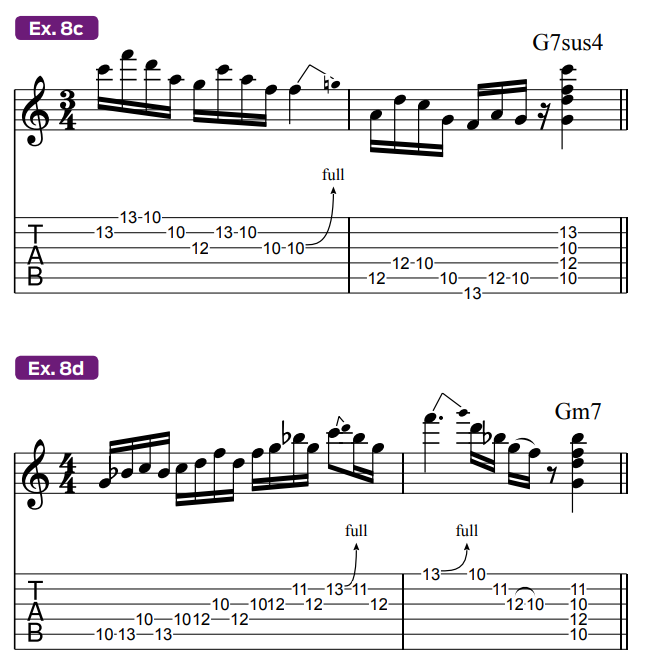
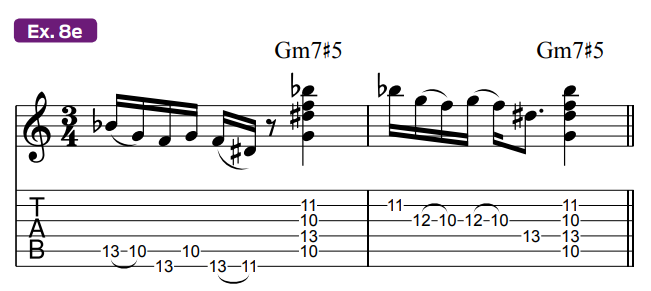
…and Examples 9a-e lay it down in Zone 5.
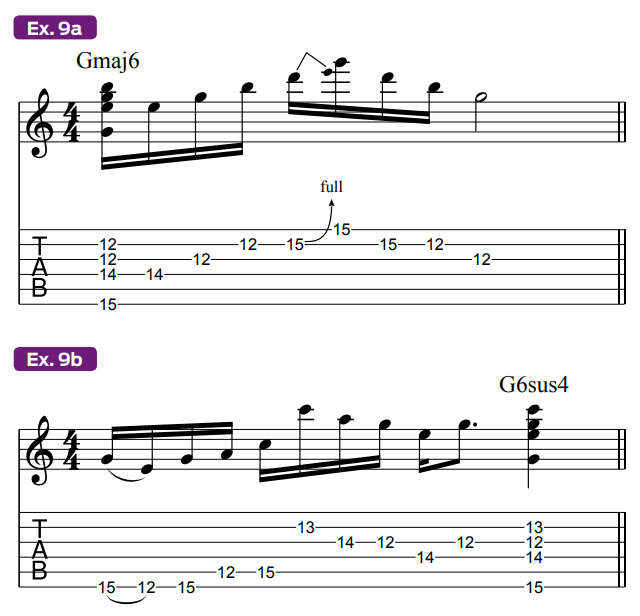


The overall objective here is twofold.
Up to this point, the zones have been played with a consistent approach, albeit with relatively varied attributes. The intent here is to stay fresh and avoid falling into patterns that inadvertently become crutches.
The other half is about staying consistent with being musical and developing a unique voice. A great way to do that is to re-examine something you already know and have success with.
Most guitarists would be hard-pressed to find a less common denominator than our pal the pentatonic scale. PPMV takes that well-ridden path and paves new ones leading to new sounds and a more solid vision of the neck.
If you haven’t already decoded the logic behind the ordering of the modes, it’s based on how they morph into one another by one degree moving up or down a half step.
For example, the major third in G major pentatonic (B) rises a half step to become the sus4 component (C) of G6sus4 pentatonic. With that in mind, if you dare consider renaming G major pentatonic “Gmaj6 pentatonic,” the connections and resultant relationships become even clearer.
Taking this proposition one step further, renaming minor pentatonic “min7 pentatonic” would help you grasp the big picture and thus help take full advantage of what PPMV has to offer.
Chris Buono is a top-selling TrueFire Artist with nearly 50 instructional videos, and a featured instructor on guitarinstructor.com. Bookending his years as a Berklee professor, he authored eight books, including the popular Guitarist’s Guide to Music Reading and his most recent publication, How to Play Outside Guitar Licks.

